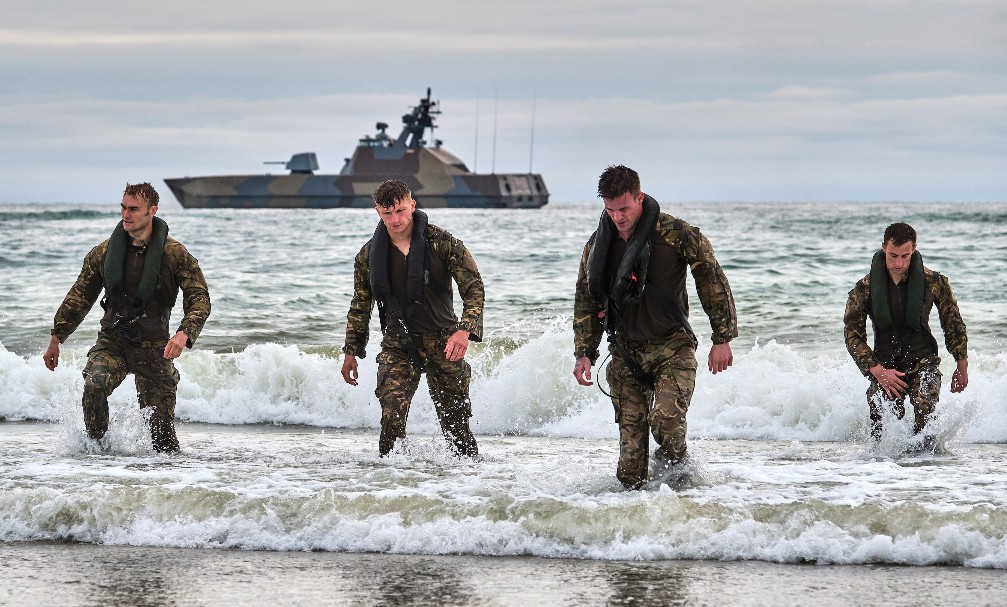
An action-packed commando raid on the west coast of Denmark brought the first stage of the UK’s Baltic deployment to a close as British Royal Marines and their Dutch counterparts waged a battle around the towns of Esbjerg and Varde taking on Danish troops…
The focus of the first phase of the deployment was meshing the different amphibious, naval, ground and air forces together in the western Baltic and eastern North Sea so they could work as one, seamlessly. Each nation’s helicopters and landing craft were tested, while the task group fired different weapon systems and practised defending itself from attack – practising skills that are the building blocks of amphibious warfare.
Royal Marines of 45 Commando and 30 Commando Information Exploitation Group, alongside Dutch, Danish and Norwegian allies, perfected helicopter raids, urban close quarters combat, the live firing of artillery and mortars, convoy and ambush tactics, and a dusk parachute drop. The training culminated in a spectacular night amphibious assault on a remote stretch of the Danish coastline.
“It’s been great working alongside the Danes, Dutch and Norwegians, during the first phase of the exercise. We are looking forward to working and training across the Baltic states with our other partners in the coming weeks,” said 29-year-old Captain Martin Harvey, second-in-command of around 100 men in X-Ray Company, 45 Commando.
For many, the training brought home the sacrifice and bravery of their forebears on June 6th 1944, when a similarly aged group of sailors, soldiers, marines and airmen fought together to defeat a common foe.
Brigadier Matt Jackson, in charge of 3 Commando Brigade, said: “We have a very close bond with our Danish, Norwegian and Dutch counterparts; forged over decades of military partnership and combat. Phase one of Baltic Protector has been a great opportunity to reinforce that long-standing relationship.”
The Baltic Protector deployment is the first test of the UK-led Joint Expeditionary Force, a substantial naval force with the Royal Navy at its heart, and forces from eight other nations with shores on the North and Baltic Sea. It includes the UK’s fleet flagship HMS Albion, Type 23 frigate HMS Kent, and Royal Fleet Auxiliary ships Argus and Lyme Bay.
Ships from the task group also met up with and trained alongside allies from NATO’s Standing Maritime Group 1, demonstrating that the Joint Expeditionary Force can act alone, but also support other NATO or EU coalitions. The deployment now moves into the Baltic and the American-led Baltops, a huge exercise running the length and breadth of the Baltic under the direction of the newly-established US Second Fleet.
